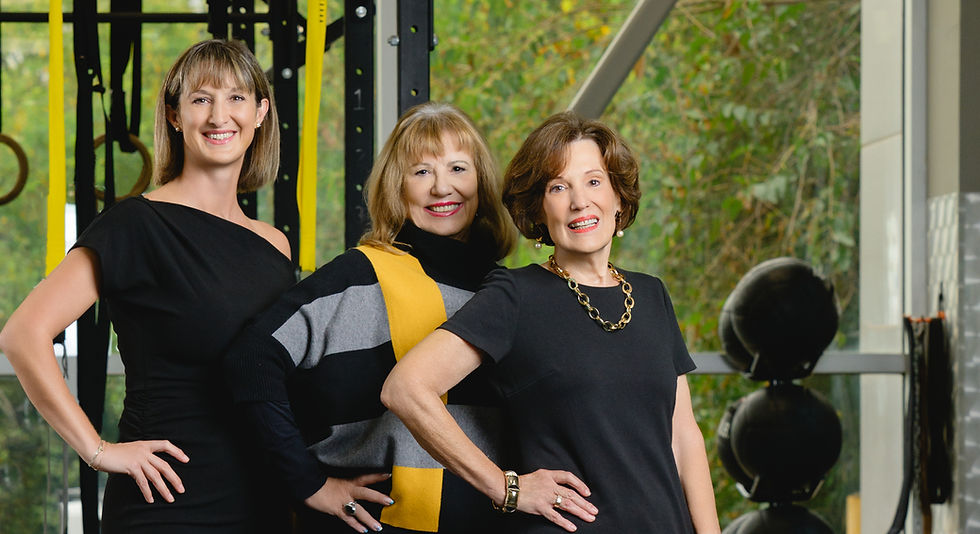Tales of the Macabre James Steele Haney on Art and Grief
- Information VOICE_TRIBUNE
- 23 hours ago
- 4 min read
By Alisha Proffitt Photos By Matt Johnson

Writer, actor, and filmmaker James Steele Haney was originally born in Lexington, Kentucky. He later moved to Louisville, where he attended high school and college, before eventually relocating to Las Vegas. Steele didn’t begin in film school or in the predictable corridors of cinema. “I’ve always kind of filmed stuff on my own—silly, funny things with friends,” he says. Life, however, is its own unpredictable screenplay. In 2020, his sister passed away, and with her went a certain light. “After that,” Steele explains, “I just wanted to write and work in film.”
That grief became the seed of Tales of the Macabre, which Steele wrote, directed, produced, and starred in. It was a film festival encounter earlier this year that inspired him to step fully into production. “I was on set with a friend that I met at a film festival and I was like, I think I could do this. So, I wrote Tales of the Macabre, and I wrote it with the idea of myself filming it at my late grandmother’s house, and we finally just made it happen this past weekend.”
The film takes place on Halloween night, 1984, following a ghost radio host who, while telling the legend of the Crimson Witch, accidentally summons her again. “Once you tell her story, she uses her dark magic to blur reality and dreams,” Steele explains. “You never see her move until she’s ready to kill.”
The witch, a crimson-clad Victorian silhouette, becomes less a monster than a metaphor, a stillness that follows sorrow everywhere it goes. “The main character is grieving, and it’s messing with his head. He doesn’t know what’s real anymore,” Steele says.
Grief, after all, is the ultimate unreliable narrator.
Filming took place in Steele’s late grandmother’s home, where his family still gathers each Christmas Eve. “It was so emotional,” he says softly. “We found old photos and things from the house to use as set pieces. My family was dropping by, my Kentucky friends were there, and my Vegas crew had flown in. It felt like my worlds were colliding in this beautiful way.”
That house with wood-paneled walls and fall leaves scattered across the yard became its own character in the film. “It’s a time capsule,” Steele says. “It still feels like 1984.” And perhaps that’s fitting, because Tales of the Macabre is a period piece. Inspired by the works of Vincent Price and Alfred Hitchcock, James wanted the film to emulate the tension and theatricality of the 1950s and ’60s horror greats, while staying true to the 80s, the candles and analog glow, the tactile reality of things.

“I love practical effects,” he says. “Even the pumpkins were real. I didn’t want to fake anything. I wanted the wax, the flame, the warmth.” His insistence on authenticity is a breath of fresh air. He recalls filming for hours in 44-degree weather, covered in costume blood and lying on the wet concrete, while his team wrestled with a difficult shot. “Even then,” he smiles, “everyone was laughing and having fun. That’s how I knew it was worth it.”
Steele’s passion for the practical feels like a bit of a rebellion against the growing sterility of digital cinema. “You can’t replicate that feeling through graphics,” he says. “Realness makes people believe. It makes the actors believe.” His crew included Kentucky locals, Vegas-based assistants, and a Los Angeles cinematographer. But above all, it was a family built through trust and a shared vision.
That trust, it seems, was hard-earned. Tales of the Macabre marks Steele’s directorial debut, and he approached it like a man building an altar. “I wanted to be a prepared director,” he says. “Because if you’re not, you set your crew up for failure.” Together with his assistant directors, Sheala Morrison and Melody Loveday, he crafted a production schedule “down to the minute.” When they fell three hours behind on the first day, they stayed up until 5 a.m. rewriting the next day’s plan. “We made it work,” he says. “But it wouldn’t have happened without them.”
Every element (casting, lighting, costume design) was chosen with care. The witch’s costume, designed by Edward Taylor, is full of contrasts. “I wanted her to seem unbothered, like she’s never lifted a finger in her life,” Steele says. “She’s elegance and terror, all in one shape.”
Even the children in the film (his nieces) were cast for their realness. “I didn’t want perfect hair or polished faces,” he explains. “I wanted them to look like real kids.”
Steele’s work is jam-packed with nostalgia: rotary phones, analog hums, beer bottles and magazines scoured from eBay, all placed carefully to resurrect a decade he calls “the perfect balance of technology and mystery.” Every film he’s written takes place in small-town Kentucky during the ’80s. “It’s just beautiful there,” he says. “The old brick, the texture of the land, it’s magic.”
That magic, he notes, is something Kentucky is finally receiving recognition for. “The film industry there is growing so fast,” he says. “And it’s wonderful to see. People take pride in their architecture, their history. It’s such a cinematic place.”
Under his film production company, Shh Studios, Tales of the Macabre now enters post-production. Steele will score parts of the film himself, blending ‘80s synth with classical orchestration. “It’s like the story itself,” he says. “Merging two worlds.” His plan is to debut the short in early 2026, sending it through the festival circuit before releasing it on streaming platforms like Shudder or Hulu (fingers crossed).
And after that? He smiles. “I want to film one of my features next year. Something bigger. Still Kentucky. Still the ’80s.”
Follow @steelejames on Instagram to stay up to date with James Steele Haney and his journey!






Comments